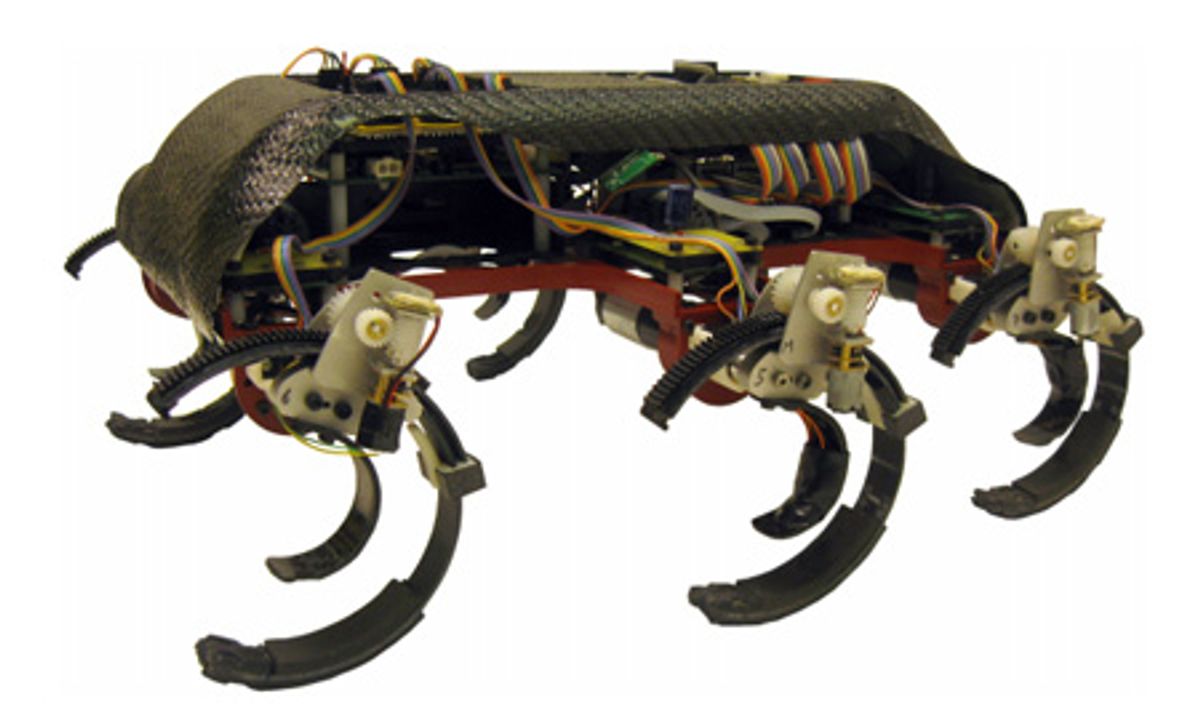You may not realize it, but you’ve got a lot of springiness going on in your legs. You may also not realize that you change that springiness depending on whether you’re running or walking, what surface you’re on, and whether or not you’re carrying stuff. Our bodies (and most animals) are able to dynamically adapt our legs and gaits to make us more efficient under changing conditions. Dynamic adaptation is something that robots are notoriously bad at, but EduBot, a son or cousin or something of the venerable RHex, has been experiment with six new “tunable” legs that allow it to adjust its gait on the fly.
EduBot’s legs are made out of carbon fiber, and by changing the location of a slider along the leg, the overall stiffness of each leg can be adjusted independently. Of course, once the stiffness of the legs changes, EduBot has to adapt its gait to match, which it does all by itself by analyzing its own speed, efficiency, and stability. A bunch of different experiments were performed to help the robot learn what leg stiffnesses and gaits produced the most desirable movement patterns on different surfaces and while carrying different loads, and generally the robot was able to figure out what worked best within 70 tries worth of experimentally fiddling with its own programming. I say “generally,” because sometimes it took longer, and because watching the robot failing to use the correct gait is pretty funny:
Overall, these experiments have shown that EduBot runs fastest and most efficiently with stiffer legs, but that things can change on softer surfaces (say, grass, or a shaggy carpet) or with payloads, indicating that adaptive and dynamic leg compliance really would be a useful thing to have on a robot, despite the added complexity. Next up will be teaching the robot to adjust its legs on the fly, and it’ll be interesting to see how this technology might benefit other robots (or even humans) with similar limbs.
EduBot’s new legs were presented in an ICRA paper entitled “Experimental Investigations into the Role of Passive Variable Compliant Legs for Dynamic Robotic Locomotion,” by Kevin C. Galloway, Jonathan E. Clark, Mark Yim, and Daniel E. Koditschek, from Harvard University, Florida A&M, and the University of Pennsylvania respectively.
[ EduBot ]
Evan Ackerman is a senior editor at IEEE Spectrum. Since 2007, he has written over 6,000 articles on robotics and technology. He has a degree in Martian geology and is excellent at playing bagpipes.





